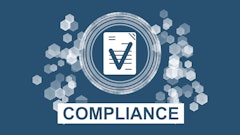New York—May 19, 2015—More than one-quarter of professionals (28.9 percent) say that their organizations experienced supply chain fraud, waste or abuse during the past 12 months, yet nearly as many (26.8 percent) have no program currently in place to prevent and detect those risks, according to a recent Deloitte Financial Advisory Services poll.
“When we ask executives overseeing supply chains why fraud risk management isn’t more top of mind, we’re consistently told that compliance resource constraints are to blame,” said Larry Kivett, partner, Deloitte Financial Advisory Services LLP. “With reputational, litigation and regulatory repercussions hanging in the balance, companies can’t afford to dismiss supply chain fraud prevention and detection. Schemes constantly evolve and come from every direction, making vigilance crucial.”
Somewhat surprisingly, respondents said that employees (22.9 percent) were the top identified source of supply chain fraud risk, when compared to vendors (17.4 percent) and other third parties (20.1 percent), which would include subcontractors and their vendors.
“Since every supply chain’s unique risk profile stems from a mix of cultures, geographies, industries and subcontractors, developing an effective supply chain forensics program is often more art than science,” added Mark Pearson, principal, Deloitte Financial Advisory Services LLP. “But, if you know where to look, red flags and other faint signals can help you focus limited resources to drive supply chain transparency and efficiency, while reducing fraud, waste and abuse risks.”
Warning signs for supply chain fraud, waste and abuse can include:
- Bidding/procurement processes that are not robust or independent;
- Lack of sufficient clarity in third-party invoice details;
- Poor or strained relationships with certain third parties;
- Infrequent or non-existent right-to-audit assessments of suppliers and licensees’ practices;
- Little to no oversight into proper administration of agreements with third parties; and,
- Use of third-party agreements that are sole-sourced without a clear explanation, or are constructed as cost-plus agreements without clear definitions of cost and other relevant terms.
About two-thirds (65.3 percent) of respondents reported that their company conducts at least some due diligence on their third parties. Nearly half as many (29 percent) evaluate the supply chain fraud risks that third parties present on an annual or more frequent basis.
Pearson continued, “Don’t fall into the ‘it can’t happen at my company’ trap. Forces outside your company aren’t always to blame. Employees often leverage transactions involving vendors and third parties to their own benefit via supply chain fraud—and when collusion is involved, detection and prevention is quite difficult.”
Kivett added, “Vendors and other third parties are becoming accustomed to filling out surveys and engaging in discussions about their practices within supply chains. In our experience, individuals and groups who have nothing to hide work hard to clarify misunderstandings and improve relationships; those hiding illicit acts may not.”
More than 2,060 professionals from sectors including banking and securities, technology, retail and distribution, process and industrial products, and consumer products, responded to polling questions during a Feb. 19, 2015 webcast, titled “Supply Chain Forensics: The Global Supply Chain Fight Against Fraud.”



























